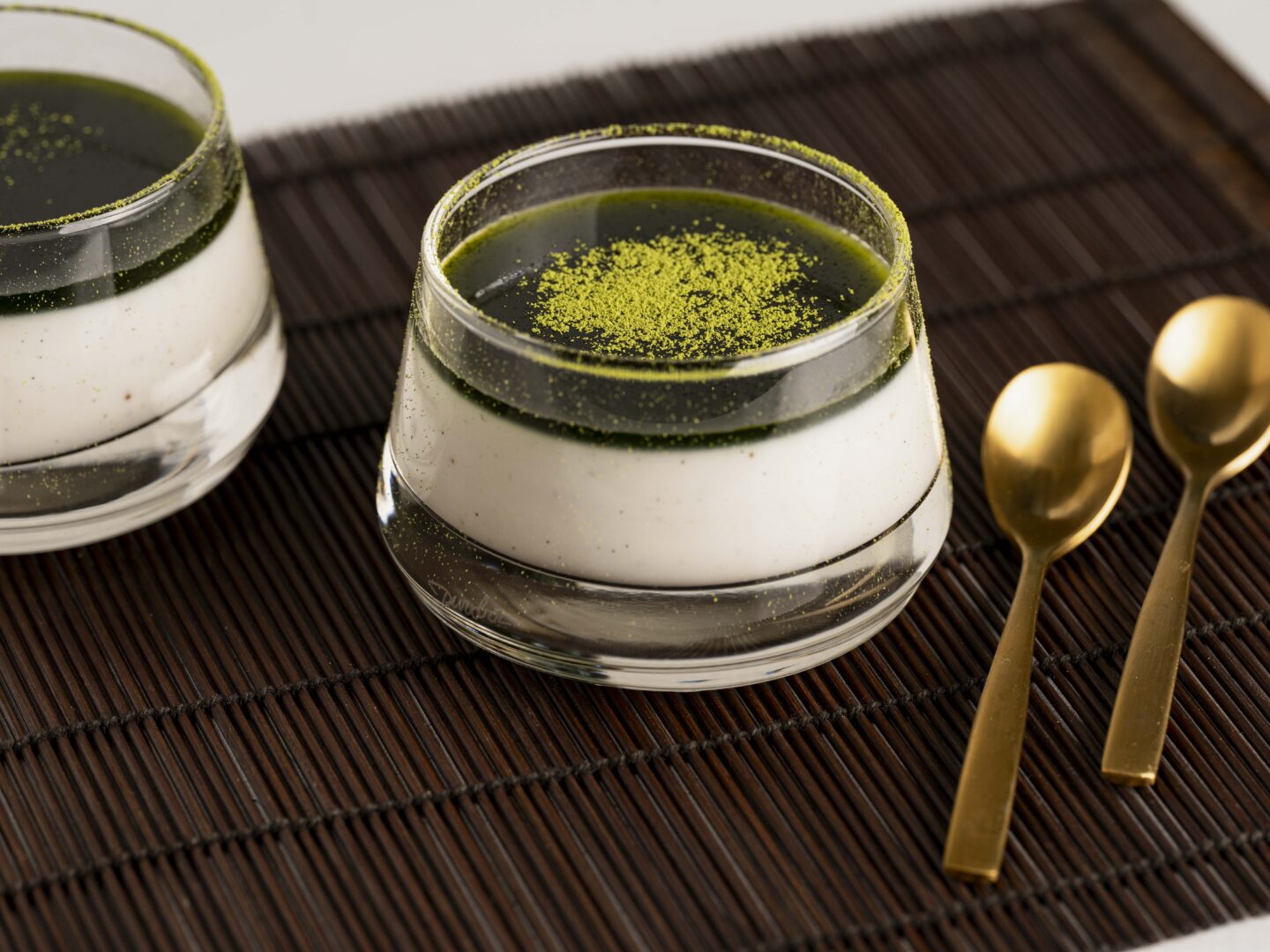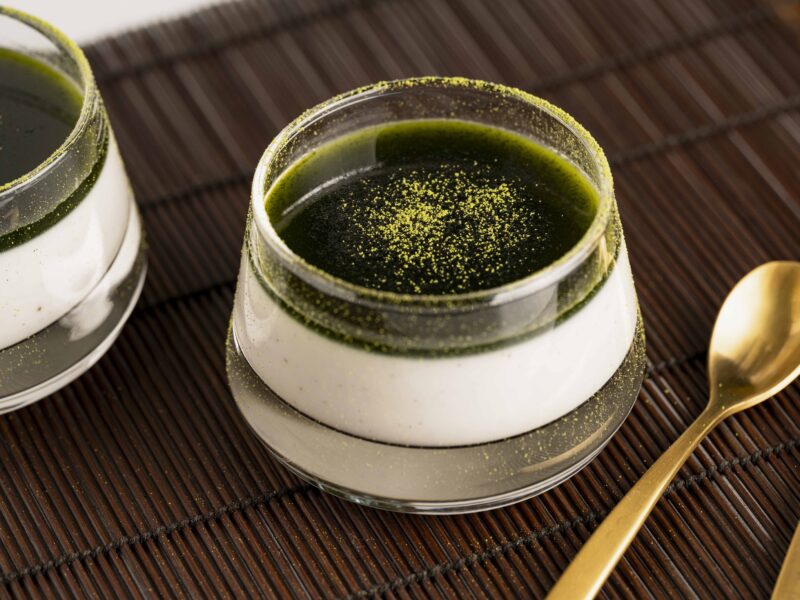Coconut panna cotta with matcha – fresh, creamy and elegant, with a touch of Japan
There's just something about matcha. Maybe it's the vivid green colour, the rich earthy aroma, or the way it turns a simple dessert into something elegant. I first tried coconut matcha panna cotta in Paris, at Ogata - a place where Japanese tradition and minimalism meet Western flair. The silky coconut cream, with a sweet and earthy matcha topping, was to die for. It's minimalist but full of flavour.
As is often the case with flavours that touch me when I travel, I wanted to recreate this moment at home. I dived into the world of matcha, studied the recipe and came up with my own version of this sophisticated dessert. And today, I'm sharing it with you. But first, what makes matcha so special?

What exactly is matcha?
Matcha is finely ground green tea, made from specially grown and carefully processed tea leaves. The best matcha comes from Japan, where it's been a central part of tea ceremonies for centuries. But did you know the powder first came from China, where Buddhist monks were the first to use it?
The role of the Buddhist monk
Back in the 11th century, a Buddhist monk brought finely ground green tea from China to Japan. It wasn't until centuries later that people started growing the tea plant – Camellia sinensis – in Japan. All types of tea come from this plant. The difference is in the processing – fermentation, oxidation, roasting...
What makes matcha so special?
Matcha is considered the most refined green tea in Japan. A few weeks before harvest, the bushes are shaded, which makes the leaves produce extra chlorophyll, giving matcha its intense green colour. Only the youngest leaves from the first harvest are selected. They are steamed, dried, and ground into powder. With matcha tea, you drink the whole leaf – which gives it an intense flavour and a caffeine kick.
Two types of matcha
Ceremonial matcha is bright green, mild and rich in umami – it's perfect for drinking on its own.
Culinary matcha is a little stronger in flavour, which makes it great for cooking and baking. Matcha brings balance and depth to desserts with coconut, citrus, chocolate or sesame, as well as to cakes, ice cream and drinks.
Buying matcha – the key considerations
When purchasing matcha, it is important to consider the following:
- Origin: Select Japanese matcha from Uji, Shizuoka, or Nishio.
- Colour: Bright green is top quality; dull or yellow-green indicates lower quality.
- Purity: 100% matcha with no additives.
- Packaging: Airtight tins are ideal.
- Correct use: Ceremonial matcha for tea and culinary matcha for cooking and baking.
Cooking and baking with matcha
Matcha is both powerful and delicate. Here are some tips for perfect results:
- Use culinary matcha for cooking.
- Sift the powder to avoid lumps.
- Use in moderation – too much will make your dish bitter.
- Avoid high temperatures – they destroy the flavour and colour.
- Store in a cool, airtight container – preferably in the refrigerator for maximum freshness.
Inspiration in the kitchen
- Drinks: Why not try a matcha latte, smoothie or affogato?
- Baked goods: Try using matcha in cakes, cookies, pancakes and waffles.
- Desserts: Matcha in tiramisu, panna cotta and ice cream is irresistible.

Recipe: Coconut panna cotta with matcha syrup
An elegant dessert with a fresh green touch on top. The panna cotta stays beautifully white, while the matcha syrup and finishing touches provide contrast. You can make matcha syrup yourself or use it ready-made.
Ingredients - panna cotta:
- 200 ml coconut cream
- 200 ml double cream
- 200 ml coconut milk or plant-based milk (rice, oats)
- 50 g sugar
- ½ vanilla pod
- 2 g agar-agar
Ingredients - matcha syrup (homemade):
- 1 teaspoon culinary matcha
- 50 ml water
- 2 tablespoons agave syrup
Finishing touches:
- 50 ml ready-made matcha syrup (or homemade)
- Ceremonial matcha powder
-
Step 1: Panna cotta
Cut the vanilla pod open and scrape out the seeds. Put the seeds and pod in a saucepan with the coconut cream, coconut milk and sugar. Heat over medium heat and stir until the sugar dissolves. Add the agar-agar and slowly bring to the boil. Continue stirring. Allow to boil for at least 2 minutes to activate the agar-agar. Remove the vanilla pod and pour the mixture into small glasses or moulds. Allow to cool and refrigerate for at least 2 hours.
-
Step 2: Matcha syrup (optional)
Sift the matcha and mix with a little cold water to form a smooth paste. Add the rest of the water and the agave syrup and stir well. Heat gently until you have a syrup.
-
Step 3: Serving
Carefully spoon the matcha syrup over the set panna cotta. Sift a little ceremonial matcha powder over the top for a refined finish.
![Panna Cotta Matcha 3]()
